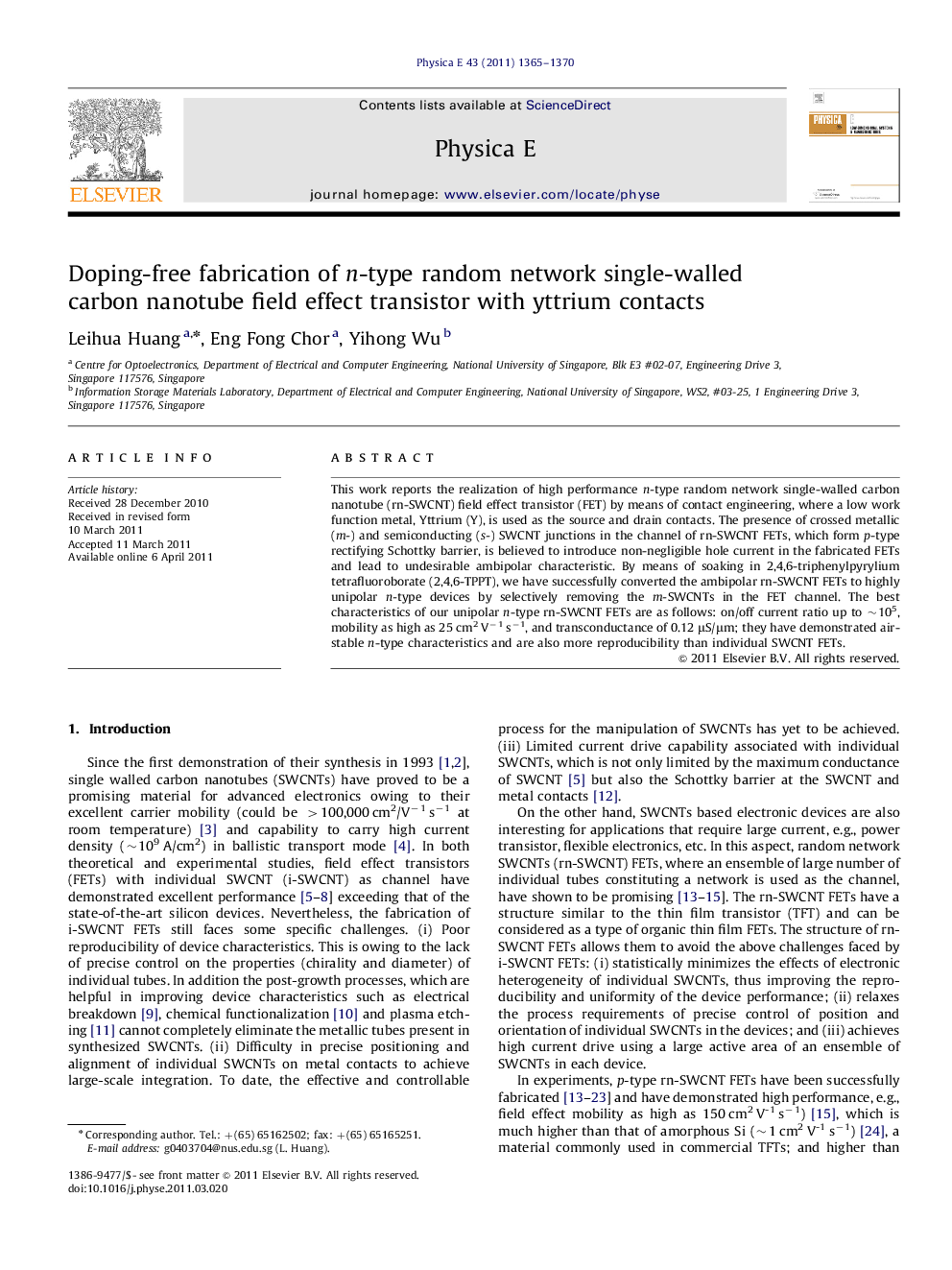| Article ID | Journal | Published Year | Pages | File Type |
|---|---|---|---|---|
| 1545050 | Physica E: Low-dimensional Systems and Nanostructures | 2011 | 6 Pages |
This work reports the realization of high performance n-type random network single-walled carbon nanotube (rn-SWCNT) field effect transistor (FET) by means of contact engineering, where a low work function metal, Yttrium (Y), is used as the source and drain contacts. The presence of crossed metallic (m-) and semiconducting (s-) SWCNT junctions in the channel of rn-SWCNT FETs, which form p-type rectifying Schottky barrier, is believed to introduce non-negligible hole current in the fabricated FETs and lead to undesirable ambipolar characteristic. By means of soaking in 2,4,6-triphenylpyrylium tetrafluoroborate (2,4,6-TPPT), we have successfully converted the ambipolar rn-SWCNT FETs to highly unipolar n-type devices by selectively removing the m-SWCNTs in the FET channel. The best characteristics of our unipolar n-type rn-SWCNT FETs are as follows: on/off current ratio up to ∼105, mobility as high as 25 cm2 V−1 s−1, and transconductance of 0.12 μS/μm; they have demonstrated air-stable n-type characteristics and are also more reproducibility than individual SWCNT FETs.
► The n-type conduction of rn-SWCNT FET was realized by Yttrium contact stable in air for 7 day. ► By treating rn-SWCNT with 2,4,6-TPPT, high uniploar n-type conduction can be achieved. ► rn-SWCNT FET exhibits high performance: ION/IOFF∼105 and the highest mobility ∼25 cm2 V−1 s−1. ► Compared with i-SWCNT FETs, the rn-SWCNT FET exhibits higher reproducibility.
